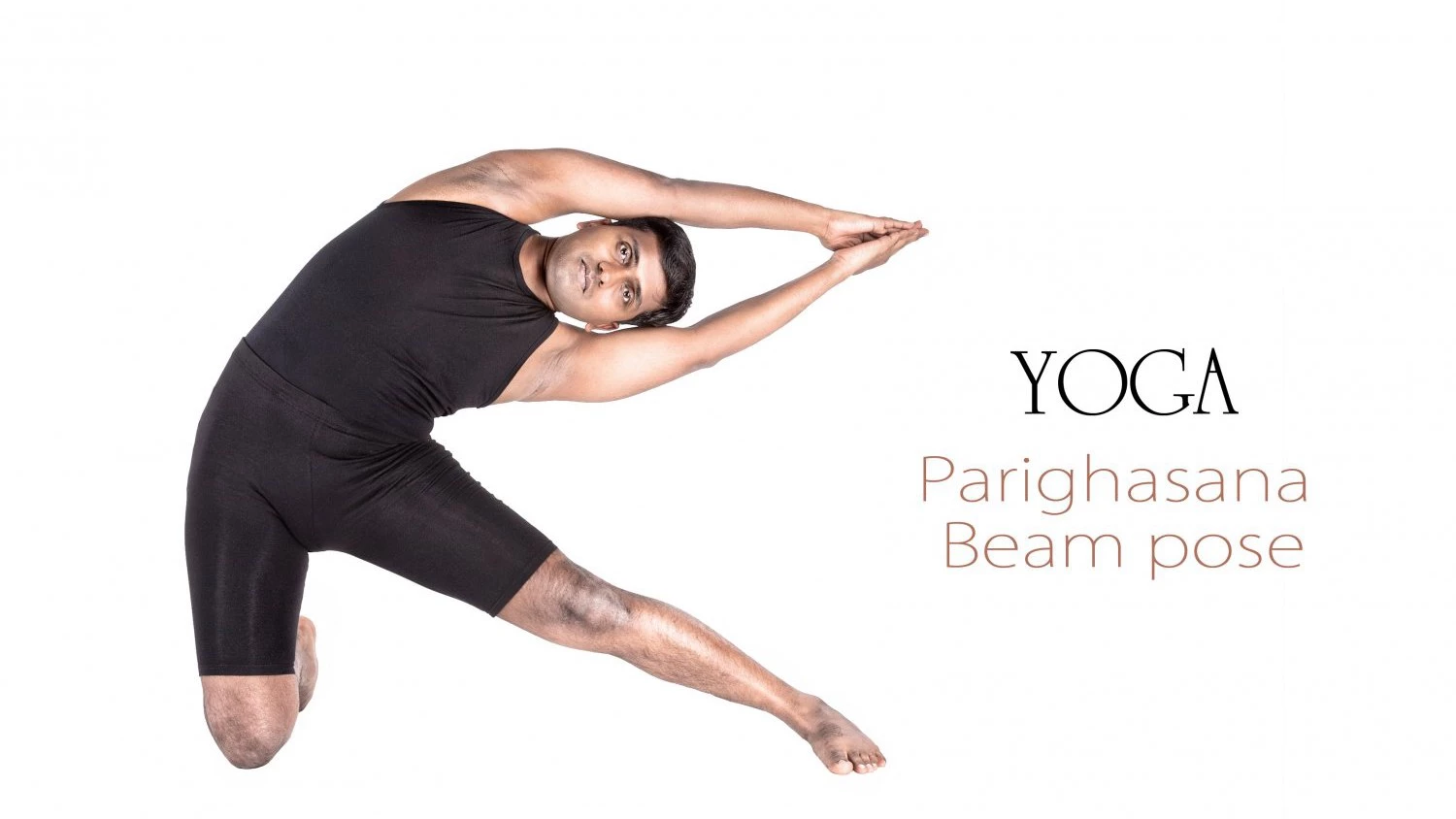Gate Pose (Parighasana)

Gate Pose (or “Parighasana”) gives us the chance to invite breath into the often-neglected side areas of our body, elongating the intercostals muscles connecting our ribs.
By opening up our side body through Gate Pose, we experience a number of benefits related to respiration, digestion, and spinal health.
Benefits of Parighasana
Parighasana elongates and engages all the core abdominal muscles, especially the intercostals, laterals, and dorsals. By stretching out and strengthening the intercostal muscles, which connect the ribs, this pose encourages deeper breathing and improved lung function. Through regular practice, Parighasana can help alleviate asthma, allergies, colds, and other respiratory concerns.
In addition, Parighasna stimulates digestion and helps to regulate kidney functioning, flushing toxins from the body. The side bend increases spinal flexibility and sends an influx of fresh, oxygen rich blood to the vertebrae.
Parighasana also helps to build confidence.
Step-By-Step Instructions:
- Come up on your knees with your legs hip-width apart and your arms at your sides.
- Extend your right leg out to the side and press down through the ball of your right foot and out the toes. Keep you knee slightly flexed (don’t lock it) and press up and out through your crown.
- Breathe in: raise you arms to the sky, palms facing in, hands shoulder width apart. Press up and out through your fingertips.
- Breathe out: Press out through your left hip and reach your arms and torso to the right. As you do so, lower your right arm and bring its hand to your right leg. Do not put weight this hand.
- Breathe deeply from this position. Press out through your fingertips and the crown of your head. Make sure your hips are aligned. Press out through your sternum, rotating your chest and upper shoulder back so that you are facing directly forward.
- To come out of the pose, breathe in and lift your torso and arms vertical, palms facing each other, hands shoulder-width apart. Press out through your fingertips as your exhale and lower your arms to their sides, brining the knees together. Relax.
- Repeat on the opposite side.
Common Misalignment Issues in Parighasana
The most common error people come up against while practicing Parighasana is twisting the torso to bend forward instead of strictly to the side. In our enthusiasm to take the pose farther, it’s easy to make this mistake. However, practicing Parighasana correctly entails holding the front of your chest perpendicular to the floor and keeping the torso straight. Don’t worry if you can’t bend very far at the start; as long as you are holding the pose correctly to whatever degree you can, you will enjoy its benefits. And, as time goes on, your flexibility will naturally increase.
Precautions:
Those with weak knees should place a soft, folded blanket or mat beneath their knee and avoid long holding times.
Variations:
Those for whom strength and balance are concerns should keep their right hand on their hip for stability.
Those who want an extra challenge can flex the foot of their extended leg.
Contraindications:
Anyone suffering from a recent or chronic knee injury or inflammation should avoid practicing Parighasana. Those with injured or inflamed hips, shoulders, arms, or spines should wait until they’ve healed before practicing this pose.


